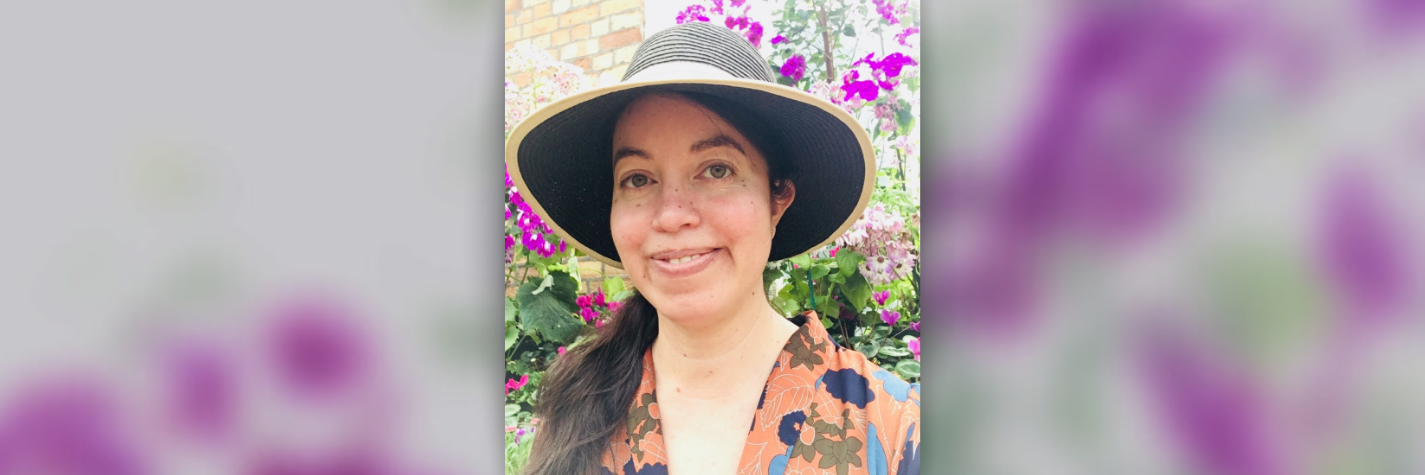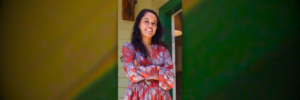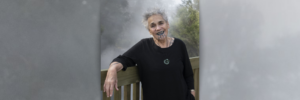
New Zealand poet and editor Kiri Piahana-Wong is of Maori (Ngāti Ranginui), Chinese, and Pākehā (English) ancestry. She is the author of the poetry collection Night Swimming (2013), and she is the publisher at Anahera Press. Her work has appeared in over fifty journals and anthologies, and Kiri has performed at numerous literary festivals across the motu. In 2023 Kiri co-edited Te Awa o Kupu alongside Vaughan Rapatahana. In April this year, Kiri published her collection Tidelines with Anahera Press.
Congratulations on your new pukapuka Tidelines. Sometimes writers talk about their book as if it is something they’ve birthed – a struggle as well as a gift. If you were to think of your book this way, who are its whanaunga? Who helped you bring this book into the world?
Ngā mihi for this question. In some ways bringing this book into the world of light/Te Ao Mārama felt like a very solitary process. The book is about grieving and going inwards, which is often done alone as part of a withdrawal from the ordinary world. However, when it came time to put the manuscript into production, the process became quite different. I worked with my close friend, artist and poet Rachael Naomi, on the cover. Collaborating with her was a dream. When I look at the physical book I see not just her artwork but also her aroha enveloping and holding my words. At Anahera Press I work with a team of the most amazing, strong and talented wāhine who, to use your metaphor, acted as the book’s midwives. I felt their joint energy and expertise as a nurturing force that helped me birth this book.
What do you think your tīpuna would think of your book? What would their reactions be?
In Tidelines I retell the story of Hinerangi, a tūpuna of Te Kawerau ā Maki who I do not whakapapa to. To be completely honest, I think that for the most part my tūpuna would like me to write about them for my next book and that this one does not interest them too much. Lol!
In addition to your mahi as a publisher and editor, you have also published a poetry collection before. How different was your approach to Tidelines compared with your first book? How did your mahi in other facets of publishing influence you in publishing your own work?
I sometimes refer to Night Swimming, my first poetry collection, as my ‘young’ book, as one third of the poems in the book were written in my early 20s. The remainder were written throughout my 20s and into my early 30s. The poems in the collection are loosely tied together by an oceanic theme, however for the most part it is simply a conglomeration of my best work from that earlier part of my life. Tidelines is different in that I sought to tell a specific story (that of Hinerangi, as mentioned above) and to explore particular themes (including grief) in detail. There is still a lot of poetry about my life, however overall the reading experience is more cohesive (I hope)! That’s not to say that Tidelines is a ‘better’ book, it just seeks to do something different – I remain very fond of Night Swimming – it’s the same kind of affectionate feeling you might hold for a teina. To answer the second part of the question, Tidelines is a very short book at just 40 pages. The original manuscript was much longer, but it wasn’t working well. I drew on my years of experience as a poetry editor to make the call that the book needed to be condensed. I had to take a deep breath on the day I cut 20 poems from the book – many of them quite good poems! I remain happy with the decision, but I would not have had the confidence to make it without all the years I’ve worked with poetry as my job.
Your pukapuka vividly explores the tidal nature of grief, hauora, identity and everyday life against the backdrop of the taiao. To what extent does the taiao influence you in your writing, as well as how you move through this ever-changing world?
The taiao influences every facet of my writing life, as well as my life in general, and is a constant source of sustenance and inspiration. I’m lucky to live in a very beautiful place now, in Whanganui, where I can feel closer to the taiao in my day-to-day life. For example, when I lived in Tāmaki, my office looked out on a carport. Now I look at trees from my office and endless sky, and I can even see a tiny sliver of the Tasman Sea. I still had a lot of nature in my life in Auckland (one of my favourite places was Cornwall Park, and also the west coast region where Tidelines is set), but I had to put more effort into seeking it out. What I enjoy about Whanganui is that it’s right in front of me all the time. This, in turn, means that I feel more creative here, and I notice I’m writing more. I’m also enjoying learning more about the Māori history of the area I’m living in, particularly around Virginia Lake which is my favourite place to walk. Yesterday, for the first time, I came across a huge waka maumahara that was erected above the lake to honour a local wahine toa, Pura McGregor, which was a thrilling discovery.
What projects are you working on now or hope to be working on in the future?
I’m working on an anthology right now with Michelle Elvy – it’s a bilingual book of 100 microfictions that will be presented in both English and te reo Māori. (This is not an Anahera Press project rather it will be published by Massey University Press in 2025). It’s a very interesting and valuable project, also a lot of work as there are so many authors involved as well as a team of translators and therefore a lot of moving parts to keep track of. (However anthology projects are always like that!). I’m also working hard on a new sequence of writing that explores the different strands of my family history in detail, and weaves together the stories of various tūpuna of mine on both sides. It has been very interesting researching this history, which contains experiences as varied as my English grandfather fighting in World War II, my Chinese grandfather’s migration from China to New Zealand in the 1930s, and my Māori grandmother’s life as mother to nine children in Auckland, far removed from her tribal lands in Tauranga.
Which book by a Māori author have you read lately that you loved and what did you love about it?
I’m currently reading a new novel – The Space Between – by Lauren Keenan. I love it! I feel as though I’m learning so much about 1860s Aotearoa, which is such a fascinating time period, but the learning is effortless because the story is so enjoyable. I’m always trying to steal moments of time to get in a few more pages. I love reading poetry of course, but it has an element of ‘work’ for me, so I enjoy reading novels to relax and switch off.
Your poems draw on inspiration from kōrero tuku iho, which you acknowledge in your book as being from an iwi which you don’t whakapapa to. Can you share with us a bit about your process in connecting with the iwi/hapū involved? What advice do you have for other Māori writers who want to draw from kōrero outside of their own iwi/hapū?
This is a great pātai. I drew on personal connections to make contact with Te Kawerau ā Maki, so I’m not sure that recounting my personal experience would be helpful to others. In general, I would sound a gentle caution against basing creative work on stories and histories outside of your own iwi or hapū. You have the unequivocal right to tell the stories that you directly whakapapa to (in my opinion!), and if you do that, you’ll also be harnessing the power of your tūpuna. In writing Hinerangi’s story, I experienced resistance (that manifested as a kind of internal struggle) and there was rarely that sense of flow you can sometimes get doing creative work. I’m still happy that I wrote Tidelines, I love the book and I’m proud that I followed the right procedures in seeking permission. However, it’s not the easiest thing to undertake.




